Circle City Congregations

All Saints Episcopal Church in Indianapolis, Indiana, where the author attends church. Photo by Lee R. Little
Introduction to religion in the history of Indianapolis
This is the first in a series concerning the History of Indianapolis and its religious congregations. Intended to serve as an introduction to the history of the Circle City, forthcoming articles will discuss the growth and proliferation of various religious groups throughout Indianapolis and the cultural context in which those congregations grew. The series is not intended to be a comprehensive survey of every church that has ever stood in the city; great care has been taken to contextualize trends of growth decline that necessarily affect church demographics.
By Lee R. Little, JD, MLS
Historiographer of the Episcopal Diocese of Indianapolis
Indianapolis is one of the few major cities in the country that is truly unnatural in origin. Prior to its creation in 1820 by the fledgling Indiana Legislature, the area at the confluence of the White River and Fall Creek was home to members of the Lenape Tribe on a seasonal basis as they followed the time-worn migration of game.
Following the 1818 Treaty of St Mary’s, which finalized the removal of Native American tribes in Central Indiana, white settlers were free to claim land in the area.
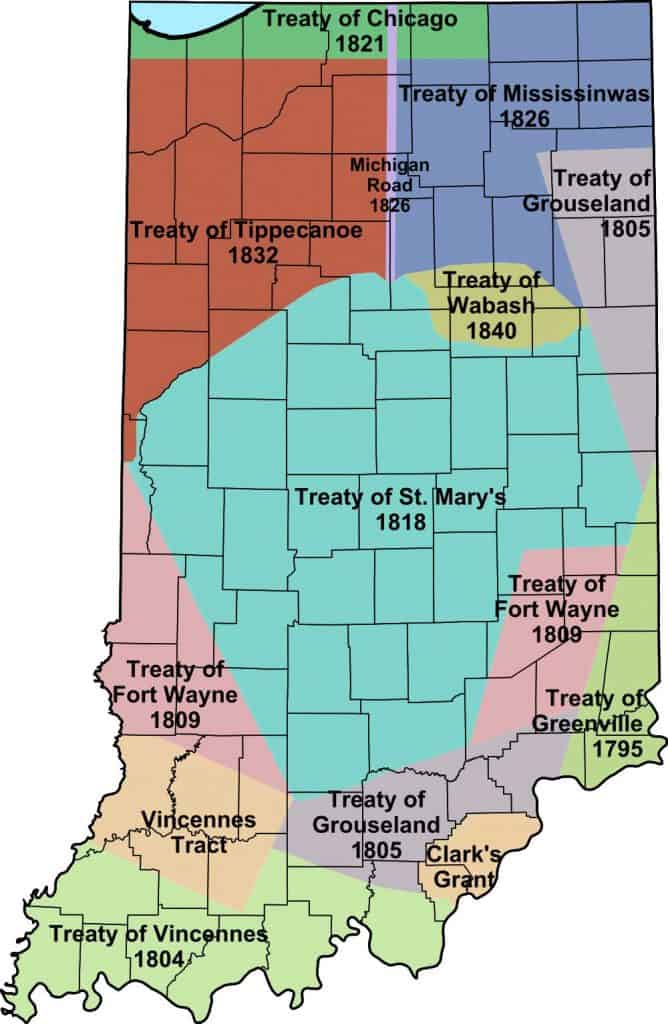
Who founded Indianapolis
Indianapolis was not the first white settlement in Indiana. Europeans had been utilizing the mighty Ohio River that now constitutes the state’s southern border for decades and river towns had popped up, typically on the Indiana side of the river from larger settlements in Ohio and Kentucky around Cincinnati, Louisville, and Lexington.
Vincennes, an early center of activity, was coöpted by the British in 1763 after being established by French trappers in 1732. After the creation of the Indiana Territory in May 1800, Vincennes was named the capital; it retained that status until 1813 when the government was transferred to the Ohio River town of Corydon.
It was the Indiana state legislature who founded Indianapolis; they moved from Corydon to Indianapolis in 1825, bringing with it an influx of related industry and a tension between non-resident lawmakers and resident Indianapolites that persists to this day.
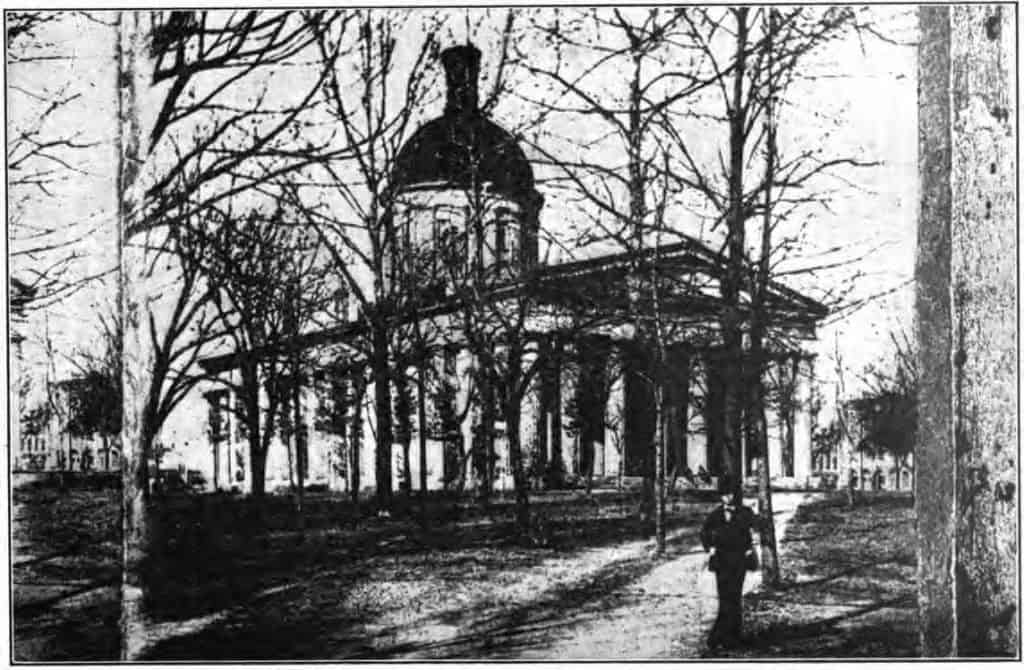
Religious life in historic Indiana
Roman Catholics brought the first European religion to the land that is now Indiana.
Part of the French colonial presence in Vincennes, Jesuits established the parish of St Francis Xavier in 1734. The parish would eventually be elevated to the status of cathedral when the Diocese of Vincennes was erected in 1834, but that status was officially shifted to the purpose-built cathedral of Ss. Peter and Paul in Indianapolis in 1898 when the Diocese of Indianapolis was created.
In recognition of its important place in the history of Indiana, the former cathedral was elevated to the status of basilica by Pope Paul VI in 1970.
Moravians from Pennsylvania established a mission on the White River near Anderson in 1801, which is likely the first Protestant activity in the state. These missionaries had been invited by Delaware tribal leadership who had recently been evicted from Ohio and settled temporarily in the area.
Those efforts proved fruitless and the missionary band decamped back East in 1806.
However, these early outposts of Christianity were located quite far from what would become Indianapolis; Anderson lies roughly 35 miles northeast and Vincennes further at more than 110 miles southwest.
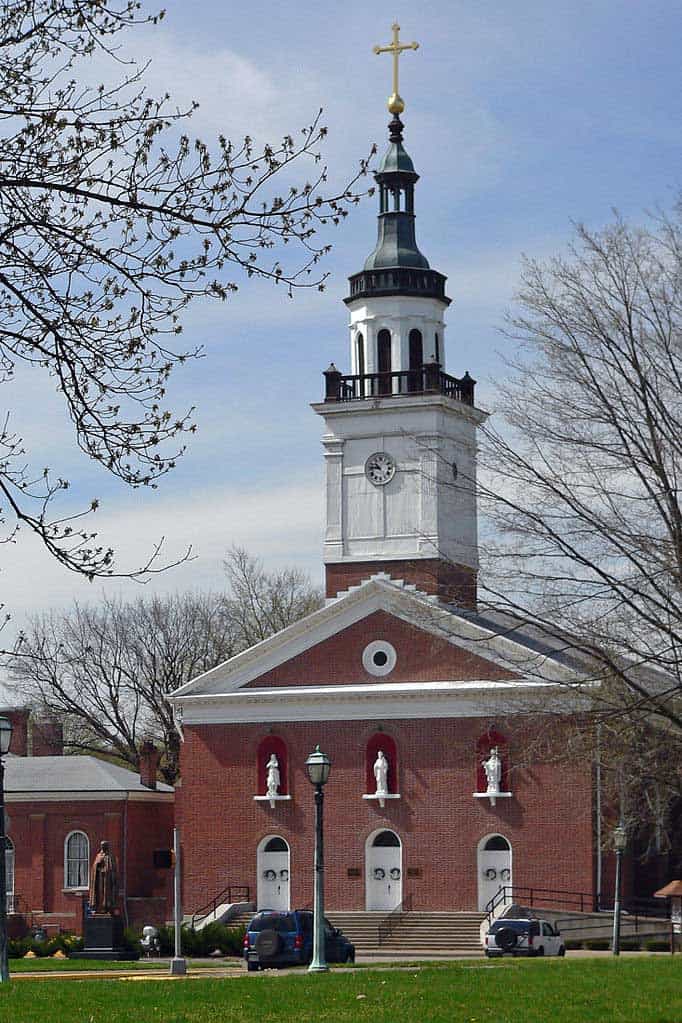
The Basilica of St Francis Xavier in Vincennes, Indiana.
Source: hbherman on Wikimedia
Who founded Indianapolis?
Early European settlers in central Indiana were necessarily of hardy stock; the area was dense forest and inhospitable to all but the most determined axe-wielding colonizer.
Debate swirls as to who founded Indianapolis; it is known that George Pogue and John Wesley McCormick along with their families were the first Europeans to settle in the area.
Pogue is claimed to have settled on the creek that now bears his name on the near-east side in March 1819 or 1820 and disappeared – likely killed by a Delaware Indian in a dispute over some horses – in the spring of 1821.
McCormick was definitively in his cabin with his family on the White River in March 1820; he gave his name to the state’s McCormick’s Creek State Park near the south-central city of Spencer.
Despite sharing his first and middle names with one of the founders of Methodism, it is unclear if McCormick subscribed to any particular faith.
Among the first settlers who arrived in 1821 were two members of the clergy: James Scott, a Methodist preacher, and John McLung, a Campbellite (more properly called Disciples of Christ) preacher.


Photographs of McCormick’s Cabin boulder taken by the author, 31 May 2020.
Layout of the Circle City
The planned city was laid out under the supervision of Elias Pym Fordham and Alexander Ralston, who had worked under Pierre L’Enfant to plan Washington, DC as the nation’s capital.
A site was chosen to plat the square mile city, bounded by streets bearing the names of its directional limits: North, South, East, and West. This original layout still exists today with some slight changes and major additions.
Surveying work began in 1821, with lots first being offered for sale starting in October of that year.
At the center of it all is a circle drive which was planned as the site of the governor’s mansion, though the First Lady quickly disabused her husband of that plan, citing the idea of hanging their washing in full sight of the entire city.
The original governor’s mansion was eventually torn down and the area converted into a park and military ground.
From 1888-1902, a grand monument to the state’s soldiers and sailors of the Civil War and earlier wars was constructed in the circular lot, granting the space a new name: Monument Circle.
The Circle continues to serve as a meeting place for all manner of gatherings.
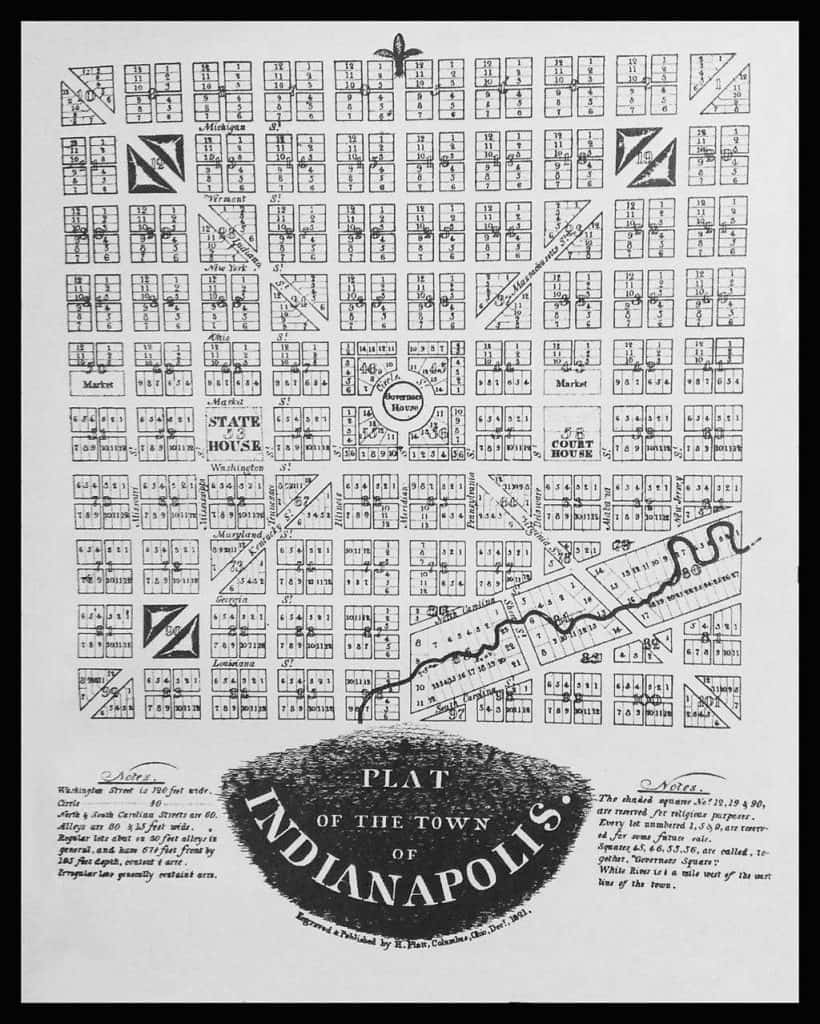
Religious life in Historic Indianapolis
Early congregations in Indianapolis were reflective of conditions in the tiny settlement on the frontier.
Settlers tended to be of Anglo-protestant stock at a time when the Second Great Awakening was in full swing. As a result, the earliest denominations to gain a foothold in Indianapolis lacked a strict hierarchy and focused on personal piety.
Methodists and Presbyterians both claim to have held the first Christian service in the area, with Baptists trailing not long after. A plaque in the Indiana Statehouse rotunda indicates that a Methodist preacher gave the first Christian service in 1819 in a grove of trees on what are now the statehouse grounds, while the Presbyterians claim a similar date but on Monument Circle.
A plaque in the statehouse rotunda (above) taken by the author in July 2019 reads as follows:
- The first formal religious service in Indianapolis was held on these grounds. [Top]
- 1819 Resin Hammond, a Methodist conducted the first religious service service under a walnut tree. [Left column]
- 1821 first church organized in the Isaac Wilson log-cabin by Reverend William Cravens. [Right column]
- Presented 1924 by members of the Meridian Street Methodist Episcopal Church – formerly Wesley Chapel. [Bottom]
- Designed By Howard Petty Who Founded Indianapolis. [bottom right in small print]
Religious life in historic Indianapolis
While the distinction of first service in town is up for debate, the date of congregational organizations are known: Methodists sometime in 1821, Baptists in October 1822, and Presbyterians in July 1823. The Disciples of Christ were established in the city in 1833, an African Methodist Episcopal (often abbreviated to AME) congregation in 1836.
Much later came the incorporation of congregations of more hierarchical denominations, namely Lutherans, Episcopalians, and Roman Catholics in 1837. The establishment of these congregations was spurred by the arrival of the National Road in 1837, allowing for easier and safer travel to the budding settlement from the East.
The Latter-Day Saints (also known as the Mormons) traveled west through Indianapolis on the National Road during their period of expulsion during the late 1830s and were met with threats of violence by locals, but successfully avoided detection by staggering their journey through the city and utilizing side streets.
The Mormons would not become officially established in Indianapolis until 1882.
Other groups would become established in short succession, particularly Jews and Lutherans of German extraction, owing to an explosion in migration from Central Europe in the late 1840s as a result of the 48er Revolutions that swept across Germany, Austria-Hungary, and France.
The Quakers have an interesting history in Indiana, outsized compared to their numbers; surrounding communities such as Carmel, Westfield, and Plainfield (home now to the Fighting Quakers high school sports mascot) held many more Friends than the Indianapolis, where a congregation was incorporated in 1854.
Many of these early congregations still exist in some form or another:
- The first Methodist congregation split in the 1840s and is now Meridian Street United Methodist and Roberts Park United Methodist.
- First-Meridian Heights Presbyterian and Second Presbyterian are heirs to their legacy.
- First Baptist and Second Baptist still have a presence.
- St Johns Roman Catholic stands near the Indiana Convention Center.
- Christ Church Episcopal is now the cathedral church of the Diocese of Indianapolis.
- The venerable Bethel AME recently moved to the northwest side.
Many other denominations have also established a presence in the Circle City, particularly in recent decades when groups that may be defined as “evangelical” or “pentecostal” formed congregations.
Churches of such charismatic extraction are popular in Indianapolis as they are elsewhere, particularly among new arrivals from Latin America.
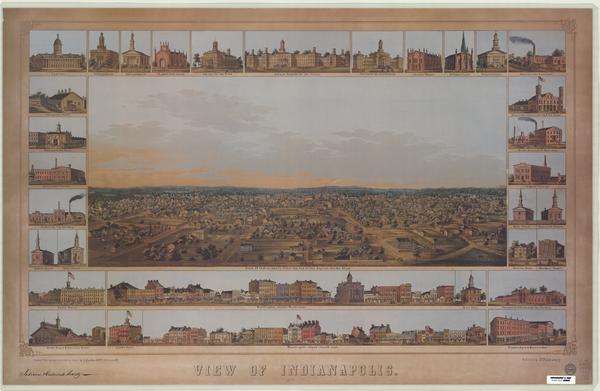
Writing in 1884, Berry Sulgrove said that it was the sermon that differentiated the early services rather than the prayers or liturgy:
The primitive churches of the city and of the entire West, where there were no rituals or authoritative forms, differed little from each other in public observances or the rites of worship, and a stranger might easily mistake one for the other, as preachers are said to have done sometimes, til the sermon came to enlighten him.
It was a rare sermon that did not betray the sectarian cast of the congregation. Now the points of identity or similarity have made a complete revolution.
The differences are more discernible in forms and methods than sermons. It is the rare sermon now that indicates the sectarian attitude or tendency of the church.
Forty and fifty years ago it was a rare one that did not. There might be nothing precedent in the seating of the congregation, in the hymns or prayers or attitudes, to distinguish a Methodist from a Baptist meeting, but the sermon would do it.
The tendency of the religious feeling of those days was to sects and separations.
It magnified differences. It hunted more diligently than intelligently for Scriptural excuses for division. It perverted texts to support creeds and uncharitable criticisms of varying creeds.
The best sermon was that which made the best array of plausibilities for sectarian separation… Thus, as related in the general history, came frequent collisions and public debates and acrimonious feelings… .
Church members may have grown more worldly-minded, more luxurious, but they have certainly grown more charitable, not so much in the ready bestowal of money as the willing exercise of generous opinion and appreciation,- a far more commendable trait and harder to come by.
As one might expect, early church leaders were socially conservative and outspoken in their beliefs, often using their sermons and influence to rail against dancing, theatre, drunkenness, and other perceived social ills – many of their their secular fellow citizens (and more than a few of the religious ones, too) simply ignored their warnings of brimstone and swayed and imbibed til their tails and petticoats swirled to the music.
I invite you to ignore their advice, and come dance with me through the history of Indianapolis as the city and its congregations grow to meet the needs of its newly arrived citizens.
Second Great Awakening
The Second Great Awakening is the period of increased religious fervor in America that lasted from roughly 1790-1840. It mainly affected Protestant denominations and coincided with major westward territorial expansion of the US.
During this time, Christian groups tended to focus on spiritual expansion in the form of increased evangelism and public displays of religiosity.
Denominations established as a result include the Latter-Day Saints (Mormons), Seventh-Day Adventists, the Disciples of Christ, and various Holiness groups typically associated with Wesleyan theology.
Converts to these new movements typically came from established Protestant groups, such as Episcopalians, Presbyterians, and Congregationalists.
Particularly in Indiana, most towns were founded during this period, which typically saw the establishment of US Post Office, town government, and Methodist and Baptist congregations in the first days of a town.
MEET THE AUTHOR
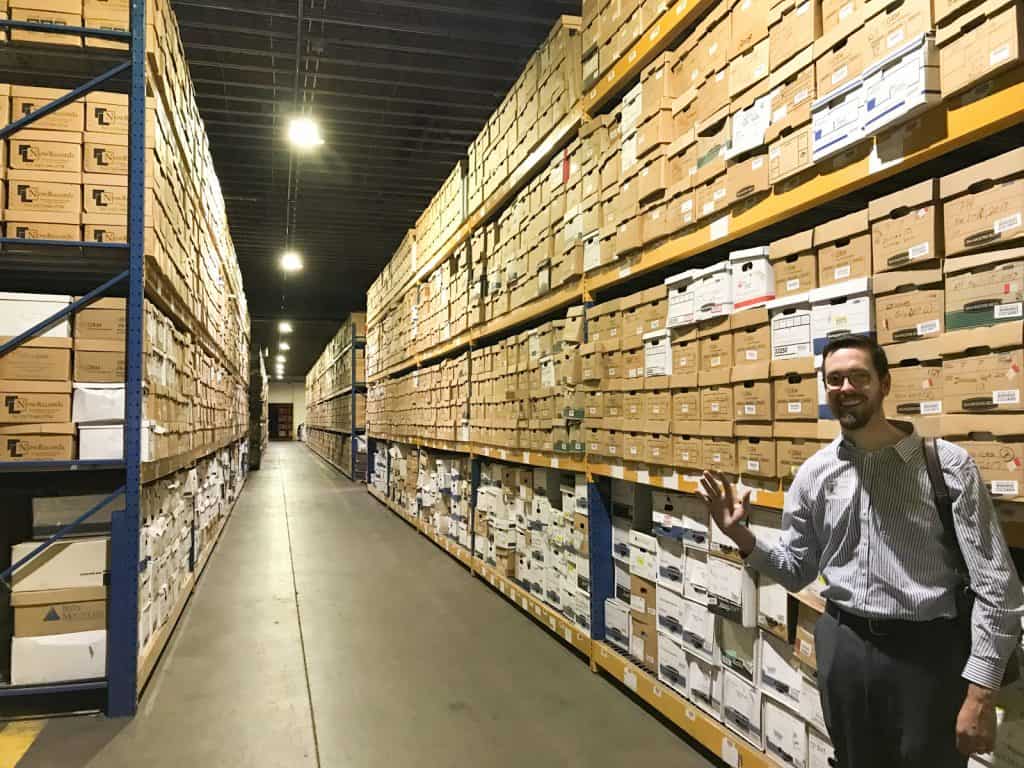
Lee R. Little
JD, MLS
Lee Little is the creator of Old Churches Indy, a project devoted to documenting and celebrating the rich religious heritage of Indianapolis. The focus of the project is primarily churches within Indy’s old city limits that were built prior to 1955 that still stand today.
Lee also serves as Historiographer of the Episcopal Diocese of Indianapolis, assisting the bishop and congregations preserve and tell the story of the Episcopalians in Indiana from its earliest days to the present.
You can find Lee on Instagram at Old Churches Indy. And, while you are here, please consider leaving a comment for Lee below in the Comment section.
Don’t miss the 2nd part of this series! Sign up for our Steeple Insider newsletter (below in footer), and we’ll let you know when Lee’s next installment is hot off the press!
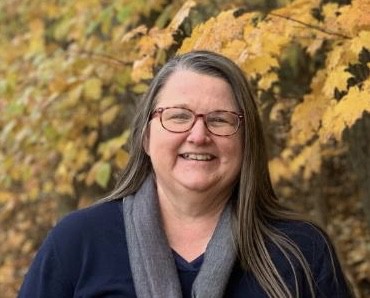
Teresa Trumbly Lamsam, Ph.D., is an accomplished Social Scientist and Journalist. Passionate about establishing credibility in the digital realm, she champions transparent and trustworthy online content. She is dedicated to producing content that sparks curiosity and nourishes the heart and mind.

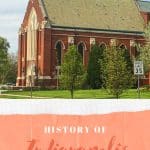
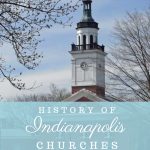
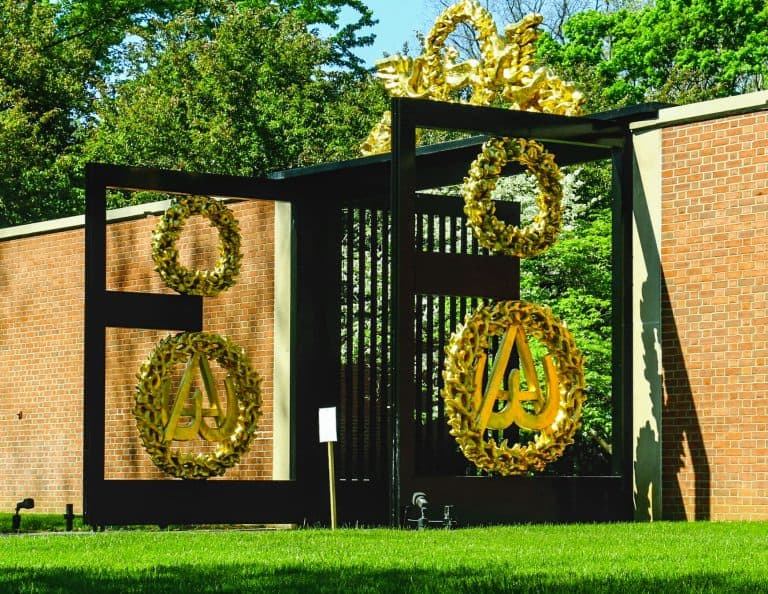

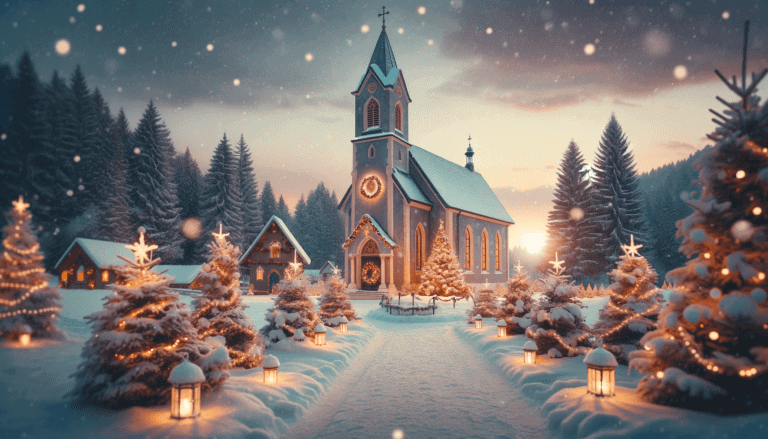
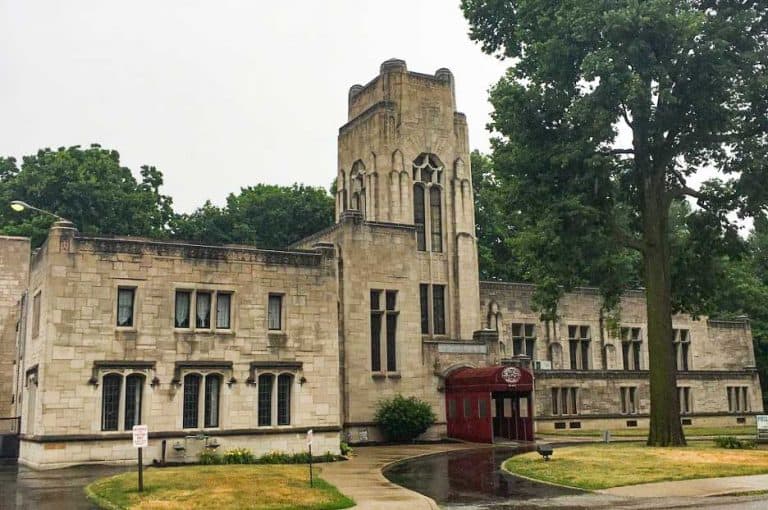
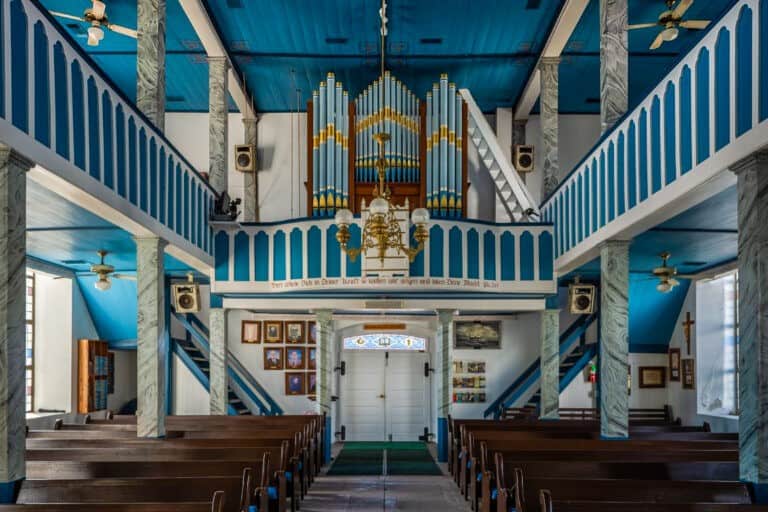
Interesting history piece! Glad I read it.
Thanks, Dulcinea! Be on the lookout for more coming soon.
I love the time, research and heart you put into sharing about the rich heritage. Thank you so much…
Thanks Donna. It’s been a labor of love and I really enjoy sharing what I know. Glad you liked it!
I found this article very informative & interesting. I appreciated the information of the founding of Indianapolis as the subtext of this article. I’m anxious to learn more.
Thanks, Michele. My hope is that it set up the frame for future articles about the city’s churches. Looking forward to read your comments on them too
I love reading about particular place’s history and your informations were really intriguing..
Thanks, Monidipa! There’s always more to learn, so I hope I keep your interest. Indy’s not as boring as a lot of folks (particularly some of us from here) might think.
This was a really interesting read. One of the things I love the most about travel is learning the history behind places, so I really enjoyed reading about Indianapolis’ history.
Thanks, Colleen. That’s one of my favorite parts too – hopefully this has helped show that “flyover country” is a lot more interesting than most think.
I found it odd that the Presbyterian church arrived there so much earlier than the Lutheran, Episcopal, and Roman Catholic churches. I would have expected them to be much closer in time frame.
This is a very well assembled history!
There’s much more to come, and I found that interesting too. I think they Presbyterians were here so early to minister to the surveying crews and never left. I’m planning to do stand-alone articles on each of these denominations, so stay tuned!
I have visited Indianapolis several times and really enjoyed the city. If I return it will be interesting to visit some of the churches. Thanks for this very thoughtful article!
I’m glad to hear you enjoyed your time here. There’s a lot to uncover and I encourage you to get in touch with me if you make your way back here – I’d be happy to make some recommendations on what to see.
Very interesting history. I always enjoy learning about religions and how they grew in early, US.
Thanks, Matt. It really is interesting to see how it’s developed and how geography plays such a big role in where certain churches were planted (or not!).
Love history and finding out about about old buildings, great post must have been fun doing all the research
Thanks, Stephen! It is truly a passion project and I’m glad you liked it!
This is all quite fascinating. So many times we walk past beautiful buildings and never learn about the history of this place, I learned so much in this article, thank you !
Thanks, Ivana. It’s so easy to get caught up in the daily grind that I sometimes forget the beauty of what’s around me.
It’s been sometime now that I have not visited a church as so it got me back in the groove as I love visiting churches. Moreover the history of a place fascinates me always and so it was great learning about Indianapolis. Nice read.
Thanks, Subhashish. I’ve also not been able to visit many churches recently – a majoy source of sadness! Glad you enjoyed this article.
wow. so much fabulous history. i love it! i had no idea there were so many treaties involved.
I’m glad you enjoyed the article. The treaties are, unfortunately, a major part of the history of the Midwest – Indiana was just a little earlier than some other states.
Anybody visiting Indianapolis interested in church history and history of the city would do well to read and take copy of this work. Great read
Thanks, Frank! I appreciate your vote of confidence. There’s much more to come, so hopefully they leave some room in their binder
Nice to know the history of Indianapolis. I have to learn more about it. Cool!
Oh wow what an indepth and detailed account of the history of Indianapolis for sure. thank you so much for taking the time out to share x
This is an interesting read. I love to explore and get information about history and religions.
History is always interesting. I’m glad you took the time to educate us.
A thoroughly researched article on the history of Indianapolis! Great resource. Well done!
i am always fascinated about history and architecture , i think now i am more mindful of it more tn ever before
Amazing all the history and culture behind churches. My dad taught me to always visit the church of every new town I visit. I would be great to be able to visit one on Indianapolis
What an awesome and in depth resource about the history of Indianapolis. Very detailed and really thorough information!
Very thorough! It always saddens me, though, to read about the “removal of native Indians” during the 1800s.
The history behind churches and the religious influence on a community is fascinating, even when it reveals some less than pretty facts. I hate that so often the church pushed native people out to set up missions. But it offers important lessons for us now to reflect and learn from! Thanks for all the hard work put into researching this post!
I showed this to my Dad who used to live in Indianapolis, and he was fascinated by the history of Indianapolis and how geography played a role in religion. Thanks for such a great read!
That was an interesting read on the introduction to the religious history of Indianapolis. I’m European- from Ireland! Your post interested me too because my husband is an Anglican Church minister.
Karen – would you or someone at his church be interested in writing a feature on the church? Next time you visit Ireland too!
This is great information. I’ve been to Indianapolis twice for a church service. I didn’t know all the history. Thanks for sharing
I have to say, I have never been to Indianapolis and hadn’t really thought much about visiting, but now I’m intrigued! I’ll have to add it to the list of places to visit!